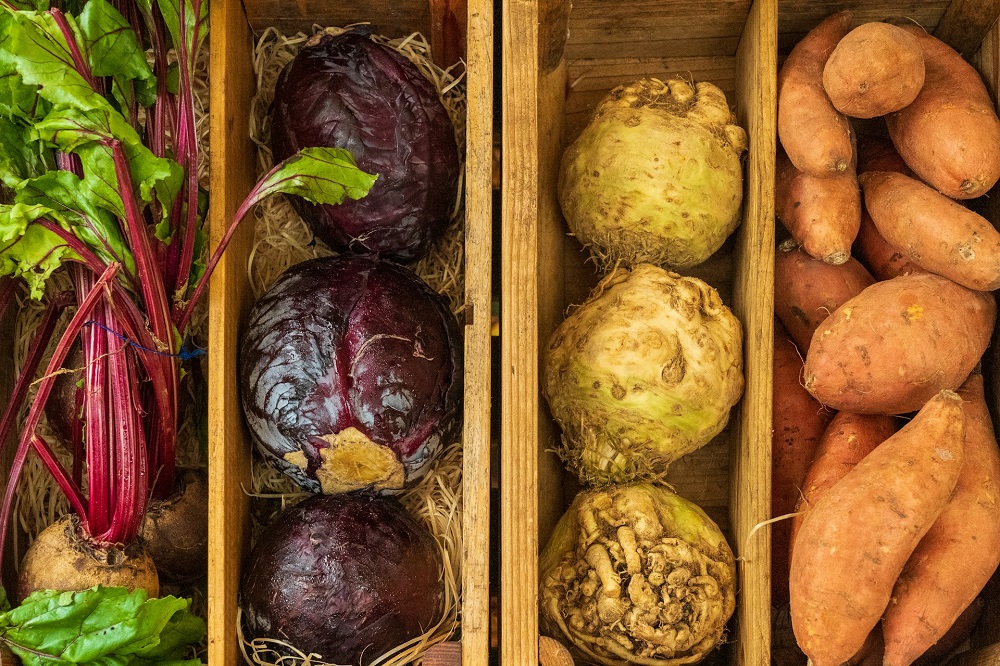In the complex world of agribusiness, the optimization of produce distribution can significantly amplify efficiency and profits.
Applying data analytics to decision-making processes is no longer optional, it is a necessity.
This approach confers meaningful insights that distributors of fresh produce can capitalize on to make informed decisions.
The accurate understanding of demand, accurate data on delivery times, and identifying the most profitable routes, all contribute to greater operational efficiency.
By leveraging these benefits, businesses can gain a crucial competitive edge in the industry.
This article will explore how data-driven decisions can strategically reshape operations to enhance overall produce distribution.
Contents
- Data-driven Decisions To Enhance Produce Distribution
- 1. Implement predictive analytics for demand forecasting.
- 2. Use real-time tracking for better logistics
- 3. Leverage AI for Quality Control and Sorting
- 4. Deploy Machine Learning for Yield Predictions
- 5. Utilize data analytics for efficient inventory control.
- 6. Apply automation for error reduction in packaging.
- 7. Integrate IoT for improved supply chain visibility.
- 8. Develop data systems for better supplier communication.
- 9. Utilize Machine Learning for Crop Disease Detection
- 10. Incorporate AI to Optimize Route Planning
- The Bottom Line
Data-driven Decisions To Enhance Produce Distribution
1. Implement predictive analytics for demand forecasting.
Successful produce distribution requires the careful management of supply and demand.
This balancing act can be substantially improved through the implementation of predictive analytics for demand forecasting.
Unlike traditional forecasting methods that often fall short because they don’t factor in external variables, predictive analytics can provide more accurate forecasts by considering multiple factors and data sources.
The use of predictive analytics involves gathering data from a variety of sources, such as sales history, market research, and external influences, like seasonal changes or economic indicators.
Predictive analytics takes advantage of machine learning algorithms to analyze this vast amount of data, identifying patterns and predicting future trends with high precision.
This technology is not limited to just predicting sales.
It can help businesses determine the most efficient way to allocate resources, whether it’s optimizing delivery routes or identifying areas of the supply chain that could benefit from increased automation.
Additionally, the use of predictive analytics can help reduce waste in the produce distribution process by providing accurate forecasts about the demand for specific items, which, in turn, allows for smarter purchasing and inventory decisions.
It’s also important to note that the accuracy of these forecasts improves over time.
As the algorithm continues to learn from the data it processes, it buries its approach, ultimately improving the accuracy of its predictions.
Furthermore, these analytics can help businesses ensure they are meeting customer needs by analyzing consumer behavior and predicting trends.
For instance, if data indicates a rising interest in organic produce, distributors can adjust accordingly to meet this demand.
However, implementing predictive analytics is not a simple task.
Total buy-in is required from multiple stakeholders, from those providing the initial data to the team members who will be performing the actual analysis.
All in all, predictive analytics offers an advanced, data-driven way for businesses involved in produce distribution to anticipate demands and make smarter decisions about their logistics and inventory management.
2. Use real-time tracking for better logistics
In the contemporary world of produce distribution, the ability to monitor the movement of goods in real time can substantially improve logistical operations.
Real-time tracking facilities provided by advanced technology not only ensure efficient and effective transit of products, but also mitigate potential mishaps.
The vitality of real-time tracking stems from its ability to furnish detailed insights into a produce’s journey from the farm to its final destination.
This functionality enables firms to assess and optimize their distribution strategies based on accurate, up-to-the-minute information.
For instance, identifying a slowdown or blockage in a distribution route could enable the immediate activation of an alternate delivery plan, ensuring timely delivery.
Thanks to real-time tracking, distributors can keep customers informed about the status of their orders, fostering transparency and building trust.
Real-time tracking is especially beneficial when dealing with produce that requires controlled conditions during transport, such as temperature-sensitive goods.
It enables immediate identification and resolution of any issues that could affect the quality or safety of the product during transportation.
Thus, the risk of product spoilage or damage can be adequately minimized, leading to overall cost savings.
Moreover, efficiency in operations is encouraged as delays, thefts, and other negative eventualities can be immediately detected and dealt with.
This level of control over logistics helps in maintaining a smooth workflow and reducing the lead time in distribution.
A data-driven approach with real-time tracking also assists in demand forecasting as it provides valuable data on customer purchasing patterns and preferences.
By analyzing this data, companies can efficiently plan for future demand, enhance their supply chain and reduce the chances of stockouts or overstocks.
In essence, real-time tracking in the context of produce distribution not only facilitates advanced logistical control, but also cultivates a culture of data-driven decision making within the organization.
Through this, it supports the larger goal of ensuring the right products reach the right places, at the right times, in the best possible condition – a tenet at the heart of effective produce distribution.
Hence, the incorporation of real-time tracking mechanisms is pivotal in evolving produce distribution practices, making them more efficient, reliable and profitable.
3. Leverage AI for Quality Control and Sorting
Artificial Intelligence (AI) has rapidly reshaped many industries, including agriculture and food distribution.
One aspect where AI has made significant strides is its capacity to offer improved quality control and sorting within the produce distribution process.
Traditionally, these tasks were accomplished mainly by human labor or simple machines, resulting in varying levels of consistency and efficiency.
Through the use of AI, quality control and sorting in the realm of produce distribution has not only become more efficient but also remarkably consistent and precise.
AI-based systems in a produce distribution pipeline can conduct meticulous scans of each fruit or vegetable, identifying tiny defects or signs of decay that humans may miss.
This overhaul in quality control lowers the risk of distributing poor-quality produce, thereby improving overall product quality and customer satisfaction.
Furthermore, AI’s capability to sort produce based on a comprehensive range of specifications—size, color, shape, ripeness, and more—offers a remarkable level of flexibility and efficiency in grouping and packaging produce.
As a result, this not only delivers greater value to the end consumers but also creates pricing tiers for different product quality levels, enhancing overall profitability.
Interoperability is yet another essential success factor in today’s digitally connected world, particularly in fields like agriculture and food distribution.
For example, these AI systems can easily integrate with other distribution chain technology, allowing for seamless data sharing that can provide crucial insights to help streamline the process.
Moreover, machine learning, a subset of AI, enables these systems to learn and improve from past experiences, further enhancing effectiveness and increasing the longevity of these deployments.
The complexities involved in implementing these AI technologies, such as high implementation costs and the requirement for technical expertise to manage them, are some of the challenges that need to be taken care of.
Nonetheless, these challenges are outstripped by the considerable benefits that AI offers to refine quality control and sorting within produce distribution.
AI’s ability to improve quality control and sorting methods is a critical contributor to maintaining freshness and quality in the distributed produce.
There is an increasing number of case studies and applications showing that leveraging AI for quality control and sorting in the produce industry is not only a feasible but also a sustainable route to achieving improved product quality and business growth.
Therefore, the adoption of AI in enhancing quality control and sorting system can be a promising avenue in enhancing the efficiency of produce distribution in the future.
4. Deploy Machine Learning for Yield Predictions
Machine learning (ML) tools have the capacity to revolutionise the field of produce distribution through enhancing yield predictions.
One potent application of ML lies in agronomic forecasting where it’s used to predict crop yields based on diverse data inputs.
This helps haulers, distributors, and retailers to accurately forecast the amount of yield they can expect from a specific parcel of land, thereby enabling them to efficiently plan their upstream and downstream supply chain activities.
Machine learning models can predict crop yields with remarkable accuracy by leveraging an array of data sources including weather patterns, soil properties, and past yield data.
By utilising ML algorithms, businesses are able to dramatically reduce the uncertainties associated with agricultural production.
It’s crucial to note that ML models need large volumes of quality data to generate accurate predictions.
Such data can be sourced from various channels like weather reports, historical yield patterns, and soil health records, and then fed into the ML algorithms for predictive analysis.
ML-powered predictions can lead to greater efficiencies by enabling stakeholders to plan for contingencies, manage resources better, reduce wastage, and optimize costs.
There’s also a significant value in using ML to predict yield quality as well as quantity.
The quality of produce plays a critical role in determining its market value and consumer acceptance.
ML models can help in assessing quality by predicting factors like shape, color, texture, and even taste – all of which play a significant role in determining the consumer acceptance of a product.
ML can also be used to forecast consumer demand and align it with production, thereby reducing wastage and improving profitability.
The insights gained from ML models can thus be valuable in improving distribution decisions and enhancing operational efficiency.
About the future, the increasing sophistication of ML algorithms and the proliferation of data sources, the scope and accuracy of yield predictions are likely to improve even further, opening a new chapter in the realm of data-driven decision-making for produce distribution.
The deployment of Machine Learning for yield predictions is undoubtedly a game-changing strategy for businesses involved in produce distribution aiming to base their operational and strategic decisions on reliable data.
Therefore, employing ML to accurately predict crop yields and quality represents a key pillar of modern, data-driven distribution strategies in the sector of produce distribution.
5. Utilize data analytics for efficient inventory control.
Effective inventory control is considered to be a cornerstone of successful produce distribution operations.
It’s an ongoing process that requires constant vigilance and in-depth understanding of a myriad of interconnected factors that influence the level of stock.
However, with the advancement of technology, the reliance on manual monitoring and outdated tools has greatly reduced.
The use of data analytics has revolutionized the entire practice of inventory management, offering more efficient and accurate ways to track and control inventory levels.
Data analytics offer actionable insights into inventory levels, enabling a data-driven approach to stock management which not only improves efficiency but also reduces waste and increases profitability.
This approach to inventory management is based on the collection, processing and analysis of vast quantities of data, gathered from different sources across the entire supply chain.
Data analytics allows for a comprehensive view, informing decisions on what, when and how much to order, leading to improved inventory turnover and reduced stockouts and overstock situations.
Data analytics can also track and analyse consumer purchasing behaviour and market trends, providing accurate predictions on demand patterns.
This predictability is valuable in areas like perishable produce distribution where product life cycles are short, and wastage can be high.
Timely information can trigger effective responses to changes in demand, preventing overstocking and understocking scenarios that could impact profitability.
It can also track and analyse end-to-end supply chain operations, identifying areas that need improvement and providing recommendations for optimization.
Data analytics in inventory control is not just about the present; it’s a tool that helps plan for the future.
With the intelligent use of historic data, analytics can forecast future demand trends, facilitating procurement teams to make informed decisions.
User-friendly dashboards and visualization tools help stakeholders understand data easily and make quick, evidence-based decisions.
In this way, the adoption of data analytics in inventory control is an imperative move for a successful, sustainable, and profitable produce distribution operation.
6. Apply automation for error reduction in packaging.
The introduction of automation in the packaging process of produce distribution can enormously reduce the likelihood of errors and subsequently enhance the quality of the end product.
The conventional manual packaging process is fraught with the risk of human errors that can lead to incorrect quantities, wrong labeling, and even contamination.
Automation, however, can virtually eliminate these errors by ensuring consistency and precise execution of packaging standards.
This translates to better customer satisfaction, fewer returns, and potentially higher profit margins.
With the use of highly advanced automated packaging machines, produce distributors can increase their packaging speed and scale, thereby reducing the time to market.
Additionally, these machines also have the added advantage of extreme precision in packaging, which means that the distribution companies can cater to specific customer demands with a higher degree of accuracy.
Another significant benefit of automating the packaging process is that it can significantly reduce the strain on human resources.
Automated systems work without fatigue, hence they can increase the production capacity of the distribution company, allowing it to meet fluctuating market demands with ease.
Moreover, because they require minimal supervision, employees can be redeployed to other areas of the business which can further enhance productivity and ensure higher output.
Automating the packaging process also improves the safety of operations by reducing the chances of manual handling injuries.
This not only leads to a healthier, safer work environment but can also potentially lower a company’s liability and operational costs.
Furthermore, automated systems offer excellent scalability, making it possible for produce distributors to quickly expand their operations when needed, without making significant changes to the existing workflow.
This ability to swiftly adapt to market changes and new customer demands is crucial in the highly competitive and rapidly evolving produce distribution industry.
Ultimately, applying automation for error reduction in packaging is a data-driven decision that can significantly enhance the efficiency, speed, and accuracy of produce distribution.
It’s a forward-thinking approach that gives distribution companies a crucial competitive edge in both domestic and international markets.
7. Integrate IoT for improved supply chain visibility.
The Internet of Things (IoT) has been making a significant impact across various industries, and the field of produce distribution is not an exception.
IoT integration can play a crucial role in enhancing supply chain visibility, making it more efficient and reliable.
IoT enabled devices and sensors can provide real-time insights into multiple elements such as location, temperature, and humidity of the products during the transportation process.
Tracking these parameters can help in maintaining the quality of the products and reducing waste caused by unfavorable conditions.
The use of IoT in improving supply chain visibility is not just advantageous for the businesses involved, but also for the end consumers as it helps in ensuring the delivery of fresh and high-quality products.
Moreover, with IoT, organizations can have actionable data about the entire supply chain from the field to the consumer’s hands, enabling better decision making.
For instance, timely information about a disruption in the supply chain can help the businesses react quickly to mitigate the impact.
Another significant aspect of integrating IoT is the potential to reduce costs.
By analyzing the collected data, businesses can identify inefficiencies in the supply chain and make necessary rectifications leading to cost-saving.
Also, companies can use IoT data to forecast demand and manage inventory more effectively avoiding overstocking or stockouts.
IoT can further enhance supply chain visibility by enabling sophisticated analytics and reporting.
With IoT-based analytics, you can have a comprehensive view of the supply chain and understand how different factors are affecting it.
Moreover, these insights can be used for strategically planning operations and setting accurate expectations with suppliers and customers.
Lastly, integrating IoT can support the creation of a more sustainable supply chain.
As businesses have more visibility, they can work on reducing wastage, minimizing carbon footprint, and ensuring social responsibility.
To sum up, integrating IoT in the produce distribution enhances transparency, improves decision making, reduces costs, and drives sustainability – making it a powerful tool for data-driven decisions.
8. Develop data systems for better supplier communication.
Developing data systems for better supplier communication is a key aspect of enhancing produce distribution in data-driven business models.
These systems facilitate the seamless exchange of information between different parties in the supply chain, leading to increased understanding and efficiency.
With reliable data systems, businesses can ensure that suppliers are kept well-informed about changes in demand patterns, inventory levels, and other critical factors that impact their operations.
Improved data systems can provide suppliers with real-time performance measurements, allowing them to assess the impact of their actions and make necessary adjustments quickly.
This not only streamlines operations but also enhances the overall productivity and effectiveness of the supply chain.
Moreover, data systems can be used to implement predictive analytics that can forecast future supply needs based on historical data and trends.
These predictions help suppliers prepare well in advance to meet changing demands, thereby reducing the possibilities of shortages or excesses.
Data systems also facilitate transparency in supplier communication, making it easier for businesses to share their expectations, guidelines, and specifications.
This enables the suppliers to understand their client’s requirements better and align their production with these needs.
Furthermore, implementing robust data systems can help in creating mutually beneficial relationships with suppliers.
Through shared data, suppliers can gain insights into the market conditions and modify their strategies accordingly, benefiting their business and improving the supply chain’s health in the long run.
Developing data systems can also streamline invoice processing and payments, ensuring that suppliers are paid accurately and on time, enhancing trust and promoting better business relationships.
In the event of disputes or confusion, these systems can provide a source of truth, enabling easy resolution and preventing unnecessary conflicts.
Thus, in a data-driven business environment, developing advanced data systems for supplier communication is an essential step to improve produce distribution.
It not only makes the process more efficient but also improves the forecast accuracy, transparency, and business relationships, leading to enhanced productivity and profitability for all participants in the supply chain.
9. Utilize Machine Learning for Crop Disease Detection
Machine learning has become an indispensable part of modern agriculture, particularly in the field of crop disease detection.
Through quickly analyzing image data from the fields, machine learning algorithms can classify plant diseases with remarkable accuracy.
This predictive capability is highly beneficial for preventive agriculture, ensuring the delivery of only healthy, high-quality produce to distributors.
Data-driven decision-making processes enhance the quality control within produce distribution channels, increasing the overall efficiency of the supply chain.
Machine learning algorithms can not only identify, but accurately predict the optimization of crop health, in turn improving the operation of produce distribution.
For instance, with preemptive disease detection, farmers can isolate affected crops to prevent the spread of diseases, reducing potential crop losses.
Prevention of such losses ensures the sustainability of a high yield rate and therefore, a steady supply to distributors, contributing to efficient distribution mechanisms.
Implementing machine learning within agricultural operations allows for optimal resource utilization, as crops that are already diseased are not unnecessarily irrigated, fertilized, or tended to.
This significantly cuts down wastage and contributes to the sustainability of the farming operation.
Machine learning technology constantly evolves to improve its disease detection efficacy; the more data it is provided, the more refined its predictive capabilities become.
By closely monitoring the effectiveness of machine learning algorithms, it’s possible to continually optimize crop health management.
Furthermore, the use of machine learning algorithms can help build databases of crop diseases and their symptoms, fostering better understanding of the diseases, and providing valuable insights.
These insights can be applied in extensive research for futuristic genetic modifications which can lead to disease-resistant crop strains.
The use of machine learning algorithms thus has the potential to significantly revolutionize the bulwark against crop diseases, reinforcing the foundation of produce distribution.
Therefore, the application of machine learning for crop disease detection emerges as a powerful tool, enabling data-driven decision-making to enhance produce distribution efficiency.
10. Incorporate AI to Optimize Route Planning
The emergence of artificial intelligence (AI) has dramatically transformed how businesses conduct operations, particularly in areas such as route planning.
With the growing challenges in food distribution, there is a pressing need for enhanced efficiency and reliability in transportation.
AI technology has the potential to optimize route planning by integrating various data sources, providing real-time analysis, and generating the most efficient routes.
This, consequently, improves on-time deliveries, reduces fuel consumption, and ultimately, cuts down the overall costs of distribution.
Integrating AI technology into route planning can play a pivotal role in reducing inefficiencies and increasing profitability in the produce distribution sector.
Apart from improved efficiency, AI-powered route planning can also enhance the quality of produce delivered.
By minimizing the time taken during transportation, the freshness of produce can be significantly preserved.
Real-time tracking data combined with AI algorithms can allow distributors to make data-driven decisions on the fly, adjusting routes based on traffic patterns, weather conditions and other dynamic factors.
Such capabilities can be seen as stealthing the way for dynamic route planning, which continually optimizes routes even while en route.
Additionally, distributors leveraging AI can improve their planning capabilities by getting accurate predictions about the expected delivery times.
Advanced machine learning algorithms can draw from past delivery histories to forecast future scenarios, enhancing communication with suppliers and customers.
The integration of AI into route planning can also provide valuable data that businesses can use to improve their overall distribution strategy.
Through analyzing this data, distributors can identify trends, pinpoint potential problems, and take remedial measures preemptively.
Ultimately, this leads to improved customer satisfaction, which is a key to any business’s success.
Moreover, the potential for AI in route planning goes beyond merely traditional trucking routes; it can also be applied in innovative distribution methods such as drone deliveries.
While the application of AI in route planning for produce distribution may seem complex, the benefits it offers in efficiency, cost reduction, and customer satisfaction make it an investment worth considering.
The Bottom Line
Fresh advancements in technology present tremendous possibilities for enhancing the productivity and efficiency of the agricultural sector.
From predictive analytics to artificial intelligence, there is a myriad of avenues to explore for improved demand forecasting, logistics, quality control and more.
Harnessing these technologies will not only streamline operations, such as inventory control, packaging, and supplier communication, but will also allow for proactive measures such as yield prediction and crop disease detection.
Utilizing machine learning and artificial intelligence software will aid in maintaining optimal routes ensuring time and cost efficiency.
Ultimately, embracing these technological solutions will further propel agricultural businesses towards sustainable growth and unmatched agility in this fast-paced market era.




